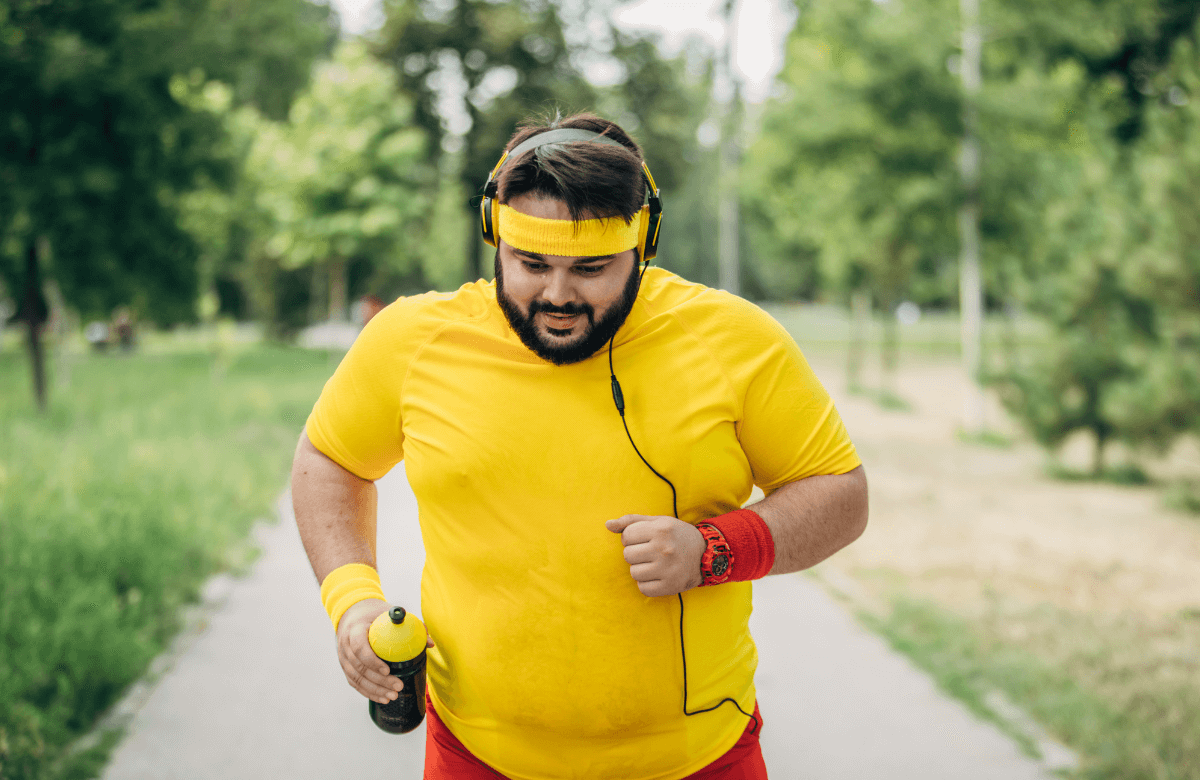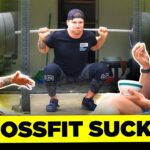Do you find it hard to get rid of unwanted body fat despite having an outlined workout routine? Is your current muscle mass or physique not quite where you want it to be? While you may be pushing certain bodyweight exercises to their limits and religiously counting your protein, fat, and carbs intake daily, you might not be getting the desired weight loss results you want.
But since each workout routine brings its own set of perks, you’re probably wondering what you might be missing. The answer is a combination of factors along with the fitness and nutrition basics.
Jump to:
The Basics of the Workout Plan
If you want to shed some body weight, you need to focus on a set of effective exercises that target the major muscle groups. Although many of us have different goals and varying fitness levels, some of the well-rounded workout plans for men to lose weight include the following segments.
Warm Up
A criminally underrated aspect of the weight loss and muscle-building journey is the warm-up. It’s important to take 5-10 minutes before your actual workout to do some basic stretches and dynamic movements. This not only helps prevent injuries but also enhances blood circulation in the body making your workout more effective and increasing muscle recovery.
You could do some light jogging on the treadmill or a few rounds of the exercise bike for a warm-up. If you don’t have access to any of these pieces of equipment, you can do some leg swings, high knees, heel kicks, and arm circles to get some blood pumping.
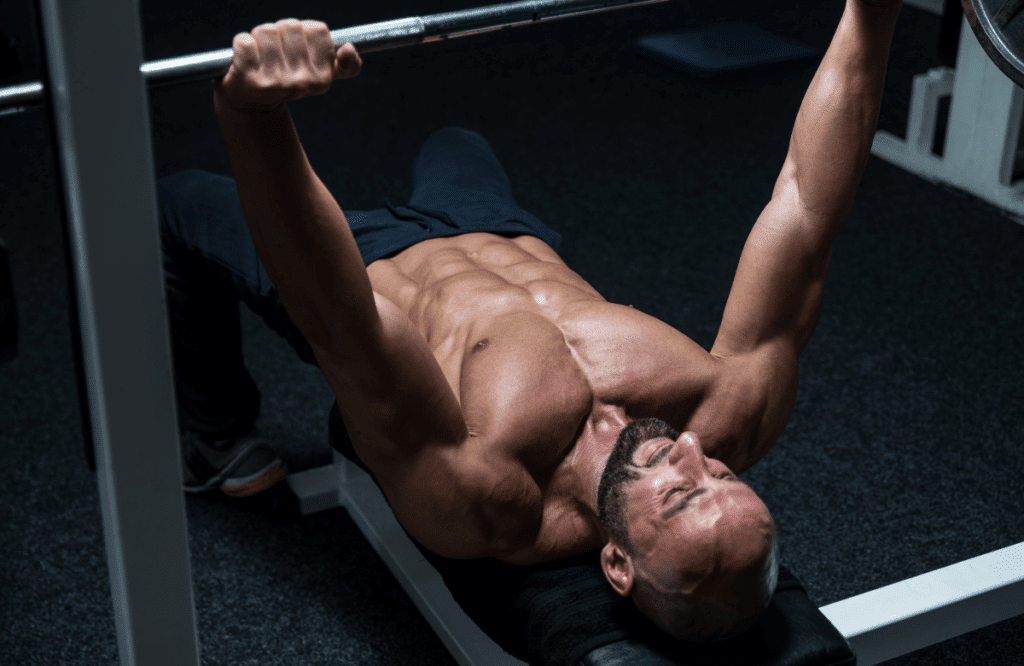
Day 1 – Chest and Biceps
For the first day, focus on exercises that target the large chest muscles. You could do bench presses, incline presses, or push-ups to work your pectoral muscles effectively. For each one, try to aim for at least 4 sets of 12-14 reps with an adequate amount of rest in between.
After chest exercises, you can move on to some of the best biceps exercises for massive arms, including barbell curls or dumbbell curls. Start with your arms at the top of each rep and slowly lower them down as far as you can go.
Again, aim for about 4 sets of 12-14 reps to fully activate your biceps muscles. You could also try hammer curls with the same rep and set count – the different motion of the exercise creates more tension in the area and facilitates better muscle growth.
Day 2 – Legs
Your lower body contains some of the largest muscle groups in the body and as such, needs to be properly targeted with intense workout sessions. Squats and leg presses are two of the most common exercises for targeting your quads, calves, glutes, and hamstrings. Aim for 4 sets of 12 reps with equally spaced rests in between.
You could also do some lunges and step-ups to work on the lower body muscles from different angles. When you turn your feet outward during squats and lunges, they become more effective for targeting the glutes and hamstrings while inwards targeting the quads more.
Additionally, you can try doing standing calf raises or seated leg extensions for a better burn. For the former, place your toes on a step and lift your heels off the ground as high as you can, then slowly lower them back down – shoot for 3 sets of 12 reps on this one. For the latter, use some ankle weights and lift your legs up starting from a seated position – aim for 3 sets of 14-15 reps.
Day 3 – Rest
As important as it is to push yourself during fat-loss workouts, it’s equally essential to rest and recover in between sessions. Take this day to rest and let your muscles relax from the intense exercises and give them time to build. This will inherently increase the effects of each workout and help you reach your goals faster without getting easily fatigued.
You could do some light cardio if you really want to get some exercise in – but make sure it’s at a low level with no strain or pressure. Aim for a maximum of 30 minutes to get your blood flowing and stay active and avoid any kind of strenuous activity.
Day 4 – Shoulders and Core Muscles
For the fourth day, you can focus on targeting your shoulders and core muscles. For the former, you can do some shoulder presses with dumbbells or barbells, both of which target the deltoids and trapezius muscles in the shoulder area. Aim for 3 sets of 10-12 reps as you slowly raise the barbell or dumbbells and lower them back down – don’t forget to breathe out when you lift up, and in when you drop them down.
When it comes to your core muscles, there are plenty of exercises you can do to reach your weight loss goals. Planks, sit-ups, and mountain climbers are some of the most popular exercise options that target the abdominal muscles while also engaging the back and glutes. Sure, they don’t involve lifting heavy weights but that doesn’t mean they don’t get the job done. Start with 3 sets of 10-15 reps for each exercise and make sure to hold your core tight during the entire motion.
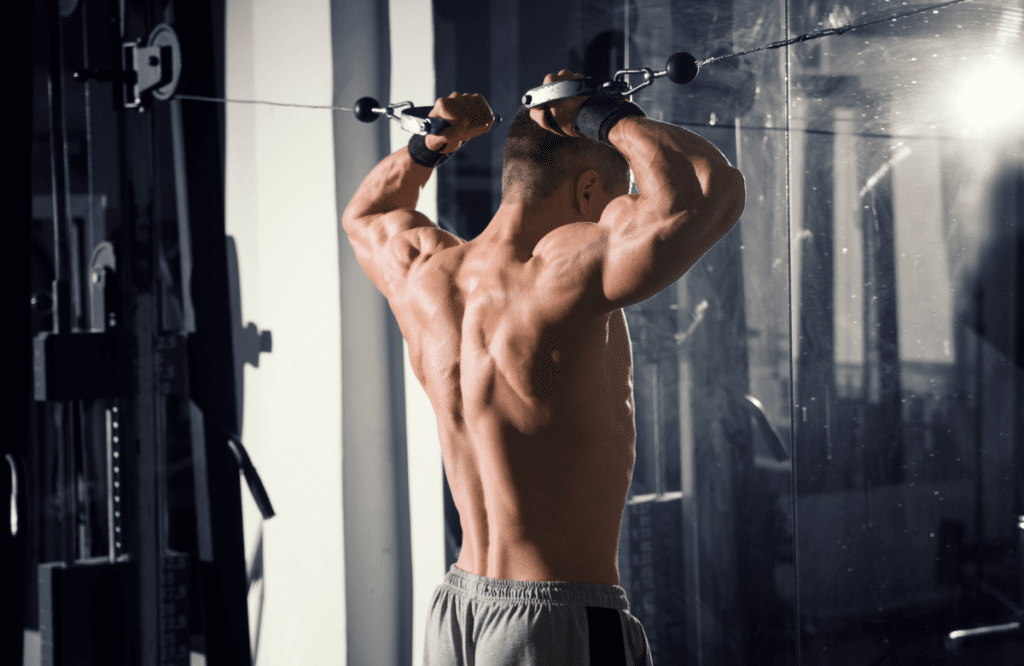
Day 5 – Back and Triceps
Much like the chest area, your back is also made up of large muscles that require regular attention if you want to maximize fat loss. The classic barbell deadlift is a fantastic way to train and tone the muscles of the back, with 4 sets of 15 reps being the standard number for fat-loss workouts. You can also have a go at single-arm dumbbell rows, bent-over rows, and cable pull-downs for a more detailed workout.
Similarly, you can target all 3 heads of the triceps muscles with tricep dips and kickbacks. For both of these exercises, you could start with 3 sets and 12-15 reps as you slowly press the dumbbells up and out. When the reps get too easy, you can increase the weight for added resistance.
Day 6 – Rest
Another day set aside for rest and recovery, day 6 should be used to let your muscles recuperate from the intense workouts of the past few days. Use this time to stay active without overworking yourself, such as taking a walk or a light jog as cardio exercises. You could also do some stretching and foam rolling to ease any soreness in the muscles.
Day 7 – Full Body Exercises
Rounding off your exercise routine is a full-body session that fully takes advantage of your muscles. For instance, you can do 4 sets of barbell back squats in 14 reps by starting off in a low squat position and pushing yourself back up. As you move up, focus on keeping your chest up and back straight to engage the glutes while also working on your quads.
Other whole-body workout options are incline dumbbell presses which not only target the chest but also engage the triceps and shoulders, as well as cable ab crunches which involve the use of a cable pulley machine that you hold on to as you raise and lower your body. Aim for 3 sets of 12-15 reps on these exercises so that the muscles get adequately activated.
Another option is wide grip lat pull-downs which target the back muscles while also using the entire arm area. Finally, you can finish off with some burpees that involve jumping, squatting, and pressing to activate all the major muscle groups. Aim for 15 to 20 reps in each set, with a maximum of 4 sets.

How Does Nutrition Play a Role in Weight Loss?
Your body composition – the ratio of fat to muscle – is largely determined by what you eat. Eating too much or not enough of certain foods can cause weight gain, as can eating too much unhealthy junk food. Even if you do all the above exercises correctly, you won’t see any results if your diet isn’t optimized.
Calorie Deficit
The key to losing belly fat and toning the rest of your body is to consume fewer calories than you burn throughout your day. This creates a calorie deficit which forces the body to tap into fat stores for energy, which are built up in the cells as triglycerides. As you steadily eat fewer calories, your body will begin to burn this stored fat and start to lose weight.
As a general rule of thumb, you should cut down around 500 to 1000 calories per day to lose 1-2 pounds a week. So, let’s say you’re burning 2500 calories a day, you should aim to consume no more than 2000-1500 calories each day. This caloric deficit should be sufficient to ensure that you are steadily losing weight.
Calorie Counting
To ensure you know exactly how much you are consuming, it’s best to count your calories. This will help you track your progress and give you more insight into which foods you should be consuming to meet your fat loss goal. You can download an app on your phone that lets you scan the barcode of each item you buy and automatically lets you know the count, or you can read nutritional labels to figure out how many calories are in each item.
Water and High-Fibre Foods Intake
Clear your system of toxins by drinking plenty of water throughout the day – aim for at least 8 glasses or 2 liters. This can increase your metabolism to burn more calories and also helps your body absorb the nutrients from food better. There are numerous studies that confirm the correlation between drinking water and weight loss, and the effects are even more pronounced when combined with the right exercise routine.
However, it’s worth noting that you shouldn’t drink water during meals, as it can reduce the digestion process by diluting your stomach acid. Instead, drink a glass of water before and after you’re done eating to keep your system well-supplied.
Moreover, high-fiber foods such as beans, whole grains, and dried fruits can help you reach your calorie deficit goals. Fiber slows down digestion, helping to create a feeling of fullness so that you don’t overeat or snack in between meals. By normalizing bowel movements and keeping blood sugar levels in check, fiber contributes to a healthier digestion process and a more effective training plan.
Portion Control
When you eat bigger portions, you are likely to consume more calories than necessary. Naturally, your body doesn’t process the food you’ve eaten immediately so it may take a while for you to feel full. To avoid overeating, it is important to keep track of how much you eat and stick to the recommended servings for each meal.
When you have smaller meals, you can eat more often and keep your body fuelled for the day. This will help to reduce any cravings or urges to snack on unhealthy foods, which imminently leads to weight gain. It’s fairly simple really – once you eat something, wait for approximately 20 minutes before deciding on whether or not you need more. This will give your body time to process the food and you’ll notice you don’t feel as hungry as you thought you were beforehand.
Alcohol and Sugary Drinks
While the recreational and moderate consumption of alcohol is typically safe, drinking too much can have a detrimental effect on your overall health. Drinking regularly increases the risk of liver disease and can contribute to obesity. Moreover, alcohol is full of empty calories that are difficult for the body to process and can quickly lead to weight gain. If you have a habit of drinking daily, cut back and only have the occasional glass on special occasions.
Additionally, avoiding sugary drinks such as sodas and juices can help keep your calorie intake in check. Sugary beverages are also full of empty calories that don’t offer your body any nutrition and can easily stack up over time. Instead, opt for water or some other healthier alternative such as unsweetened tea or coffee.
Fruits and Vegetables
If you want to focus on lean muscle gain and cutting fat, then you should increase your intake of fruits and vegetables. They are rich in vitamins, minerals, antioxidants, and fiber that can help boost your metabolism and reduce your calorie intake. In addition, they are low in calories and can help you feel full for longer periods of time.
Even in normal diets, you should consume around 5 servings of fruits and vegetables every day to help provide your body with the nutrition it needs. Try to start each meal with a salad or a piece of fruit, and incorporate some veggies into every dish you make. You can eat an apple or a bowl of vegetables as snacks instead of reaching for unhealthy chocolates or chips.
If you don’t like this arrangement, you can always turn to protein bar snacking or have a smoothie mid-morning and/or mid-afternoon. This will act as a catalyst for your day’s full of energy and help you perform better, especially if you’ve got an intense workout planned for the day.
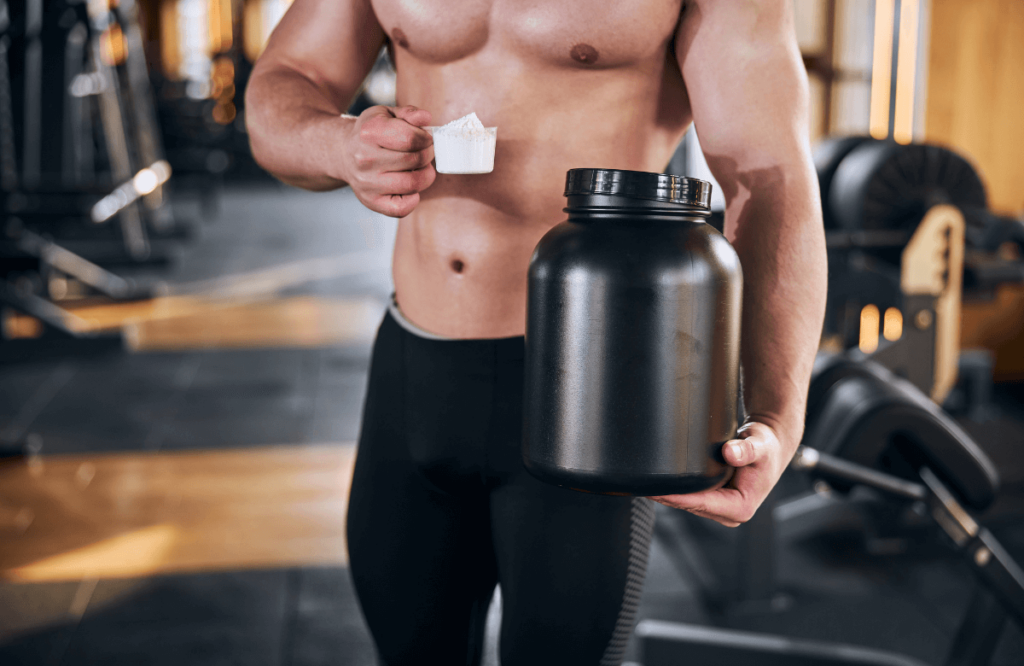
What About Supplements?
Another pillar in workout plans for men to lose weight and burn fat is the use of supplements. While it’s essential that you get your food intake right, adding a supplement to your diet can help accelerate your progress and give you the nutritional boost in the most convenient way possible.
The Recommended Supplements and Their Role in Weight Loss
Not all supplements have the same composition, with some designed to help build muscle mass, speed up recovery and optimize performance. Some of the most effective products on the market include whey protein, creatine monohydrate, glucomannan, beta-alanine, and caffeine.
Whey Protein
Whey protein is derived from milk and contains all the essential amino acids that you need to build and repair muscle tissues. It helps to fuel the anabolic process (muscle growth) and is usually taken before or after workouts to build strength and improve performance.
Whey protein is a rich source of high-quality protein, which is essential for building and maintaining lean muscle mass. A higher muscle mass can increase your metabolism, leading to more calories burned at rest. Consuming whey protein can help you feel fuller for longer, reducing hunger and cravings. This can lead to a decrease in overall calorie intake, promoting weight loss.
Protein has a higher thermic effect than carbohydrates or fats, meaning your body expends more energy digesting and processing it. This increased calorie expenditure can contribute to weight loss. Adequate protein intake, such as whey protein, can aid in muscle recovery after workouts, enabling men to perform better during exercise and burn more calories.
Keep in mind that whey protein supplements should be used to support a balanced diet and regular exercise routine, rather than a sole solution for weight loss.
Creatine Monohydrate
Creatine monohydrate is a muscle-building supplement that can also increase strength, endurance, and power output. It works by increasing the production of ATP, a molecule that delivers energy to cells for muscle contractions and other processes. This inevitably leads to improved performance in the gym and faster muscle growth.
During weight loss, some individuals may experience muscle loss along with fat loss. Since creatine can support muscle growth and recovery, it may help preserve lean muscle mass during a calorie deficit, which is crucial for maintaining a higher metabolic rate.
Faster muscle recovery from intense workouts may help you be more consistent with your exercise routine, aiding in overall weight loss. Still, despite these potential benefits, it’s essential to note that creatine is not a weight loss supplement, and its effects on body composition may vary from person to person.
Glucomannan
Glucomannan is a dietary fiber derived from the root of the konjac plant. It is often used as a supplement to aid in weight loss due to its unique properties. It has an exceptional ability to absorb water, forming a gel-like substance in the digestive tract. This gel can create a feeling of fullness and reduce appetite, leading to a decrease in calorie intake.
This gel formed by glucomannan slows down the emptying of the stomach, which can help regulate blood sugar levels and reduce hunger between meals. Glucomannan may hinder the absorption of dietary fats and sugars, potentially leading to fewer calories being absorbed by the body.
As a fiber, glucomannan can promote healthy bowel movements, preventing constipation and supporting overall digestive health. To experience the potential weight loss benefits of glucomannan, it’s essential to take it before meals with plenty of water to ensure it forms the gel in the stomach.
Beta-Alanine
Beta-alanine is a nonessential amino acid that helps to reduce fatigue and improve exercise performance. Its main function is to raise the levels of carnosine in your muscles, delaying the accumulation of lactic acid and allowing you to train harder for longer. While beta-alanine itself does not directly promote weight loss, its potential benefits in enhancing exercise performance can indirectly contribute to weight loss.
Beta-alanine supplementation can help reduce muscle fatigue and improve exercise capacity during intense workouts. This can lead to longer and more intense training sessions, resulting in a higher calorie burn and the potential for greater weight loss.
By increasing the body’s ability to buffer lactic acid, beta-alanine can delay the onset of muscle fatigue during workouts. This can allow you to work out at a higher intensity for a longer time, leading to more calories burned and improved fat loss over time.
Regular resistance training, combined with beta-alanine supplementation, may contribute to the development of lean muscle mass. Higher muscle mass can boost metabolism, leading to more calories burned at rest. When combined with a proper diet and exercise routine, beta-alanine can support overall body composition improvements, including a decrease in body fat and an increase in muscle mass.

Caffeine
Caffeine is a stimulant that can help boost energy and alertness in the most natural of ways. It’s been proven to increase mental focus, performance, and fat burning. When used correctly, it serves as a potent fat-burning agent and can help burn more calories throughout the day. While the usual sources of caffeine like coffee and energy drinks are fine to consume in moderation, using a caffeine supplement can help you better control your intake.
Caffeine can temporarily boost metabolism by stimulating the central nervous system. This can lead to a slight increase in calorie expenditure, especially when combined with physical activity. Plus, it has been shown to increase the release of fatty acids from fat cells, making them available as a source of energy for the body. This effect may contribute to greater fat burning during exercise.
Caffeine can act as an appetite suppressant, reducing feelings of hunger and leading to a decreased calorie intake. What’s more, it can enhance physical performance by reducing perceived effort and increasing endurance. This can lead to more intense workouts, resulting in more calories burned and potentially greater weight loss.
However, it’s important to approach caffeine supplementation for weight loss with caution. The effects of caffeine can vary from person to person, and excessive intake may lead to side effects such as jitters, insomnia, increased heart rate, and anxiety. And don’t forget – your body can develop a tolerance to caffeine over time, reducing its weight loss effects.
How Can Your Sleep Schedule Affect Your Weight Loss Journey?
Getting enough sleep is an important part of any weight loss journey, as it boosts your mental and physical performance. If you don’t get enough rest, your body won’t have the opportunity to repair and recover from your workouts. This can lead to fatigue, irritability, and even a slower metabolism. Not only can this hinder your progress in the gym, but it can also cause cravings and overeating.
When you combine the right amount of sleep with a healthy diet and regular exercise, you will find that your weight loss journey becomes much more successful. You feel more energized and willing to stick to your plan, which ultimately leads to visible results. Aim for seven to eight hours of sleep every night and take the occasional nap if you need to recharge your batteries.
To help you fall asleep at night, you should limit screen time, restrict caffeine intake and create a relaxing sleep environment at least an hour before bedtime. This includes dimming the lights and avoiding any bright lights or intense activities that can keep you up at night. Once you wake up, try to get some sunlight exposure and stick to the same sleep schedule for several weeks.
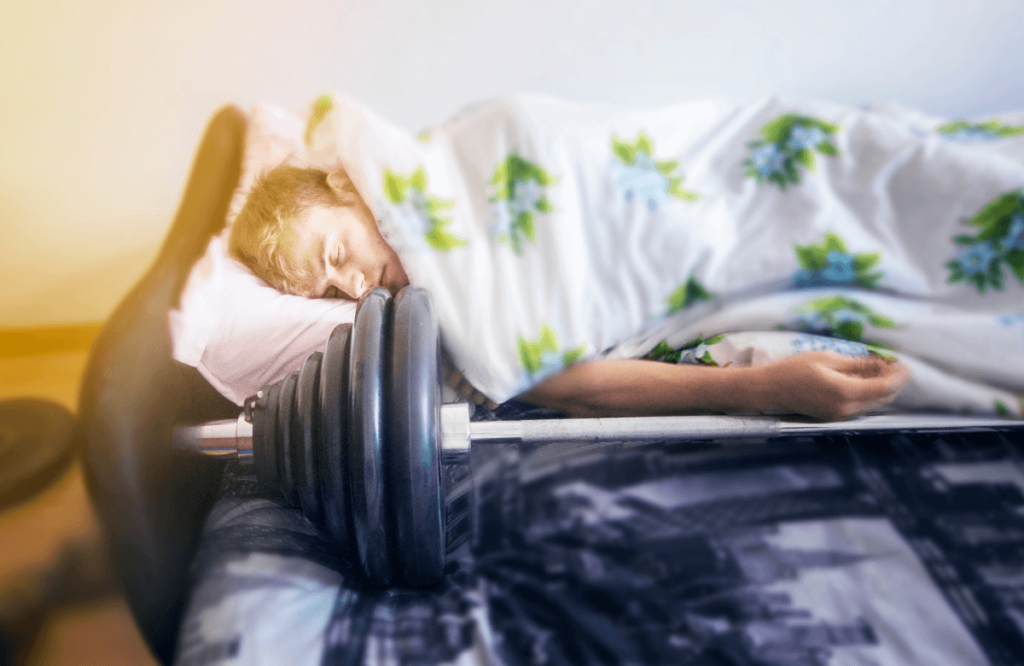
FAQ
What is the best workout plan for weight loss?
That would be a combination of exercises that target different muscle groups across several days of the week. This should include cardiovascular exercises such as running or an exercise bike session to increase your heart rate as well as strength training exercises to build and tone muscle. Make sure you also include adequate rest days for proper recovery, in addition to a varied diet and plenty of sleep.
Can you get ripped in 12 weeks?
If you stick to a consistent workout plan and diet, it is possible to get ripped in 12 weeks. However, this will depend on your current body composition and fitness level, as well as how dedicated you are to the process. You should also ensure that your workouts and diet are tailored specifically for weight loss goals and consult with a nutritionist if needed.
Is the gym best for weight loss?
Not necessarily – while it offers some commercial equipment, a range of useful facilities, and even expert guidance, you could also achieve weight loss goals with home workouts or outdoor activities. Even if you don’t have a whole assortment of weights and machines, you can still use your body weight or resistance bands to achieve the desired results. As you progress, you can upgrade your equipment and add more challenging exercises to your routine.
What burns belly fat?
A combination of a balanced diet and regular exercise is the most effective way to burn belly fat. Focus on consuming fewer calories than your body needs to create a calorie deficit, leading to weight loss. Choose whole, nutrient-dense foods like fruits, vegetables, lean proteins, and whole grains while limiting sugary and processed foods.
Incorporate cardiovascular exercises like running, swimming, or cycling to burn calories and reduce overall body fat. Additionally, add strength training exercises to build muscle, which can help boost your metabolism. Targeting belly fat alone through specific exercises is not effective; overall fat loss is essential to reduce belly fat. Remember, consistency and patience are key to achieving sustainable results.



